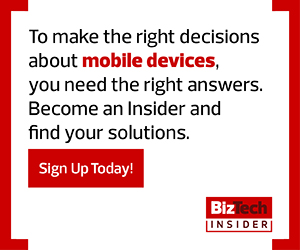How Does Contactless Payment Work?
The idea behind contactless payment is simple: Instead of handing over cash or inserting credit cards, customers simply hold their preferred method of payment — such as a chip-enabled PIN card, a smartphone or even a wearable device such as a smart watch — near a point-of-sale (POS) terminal designed to request and read relevant financial details.
But how does this work in practice? As noted by Business Insider, most contactless payment systems rely on near-field communication (NFC) technology, which requires two parts: an initiator that generates a radio frequency field and a target that’s powered by this field to store credit data. This is the case for both contactless credit cards and mobile pay services such as those from Samsung, Apple and Google: Contactless POS readers create a small RF field which powers up the smart chip embedded in the credit card or mobile devices and initiates a one-time, encrypted transaction for the amount of the sale.
The Growth of NFC Technology and Contactless Payments
While major technology players have been bundling contactless payments as part of their mobile device lineups for years, market penetration has been limited. The more recent backing of chip-and-PIN cards by major banks and credit providers has helped speed adoption. In Poland, for example, the vast majority of POS terminals are set up for contactless payment (also called tap-to-pay transactions), while nearly 70 percent of transactions in Canada that are under $50 are completed via contactless payment.
In the United States, meanwhile, the impact of recent pandemic regulations is driving a nationwide uptick in contactless customer interactions. As noted by Raconteur, 27 percent of American small businesses have already reported an increase in tap-to-pay transactions.
MORE FORM BIZTECH: Learn the difference between NFC, RFID and RAIN RFID.
Are Contactless Payments Safe? The Limitations of NFC Technology
Despite speed and safety advantages, contactless payment isn’t perfect.
One issue is range: NFC solutions require devices to be less than an inch from each other to initiate transactions. A potential solution is Bluetooth. Already present across mobile and wearable devices, Bluetooth features a substantial range boost plus increased transaction speed, along with the ability to handle more than one operation simultaneously, in turn allowing terminals to handle multiple transactions at once.
Security is another potential drawback of no-touch payment processes. While fears around thieves stealing payment data from customer smartphones by approaching them and then forcing RF interactions are unfounded — terminals require encrypted interactions that must be authenticated and approved by financial institutions — other concerns have merit.
For example, stolen chip-and-PIN cards can be used to initiate seemingly legitimate transactions. This is especially concerning as many credit providers are raising tap limits to $250 or more in an effort to help consumers quickly pay for necessary goods and services.











